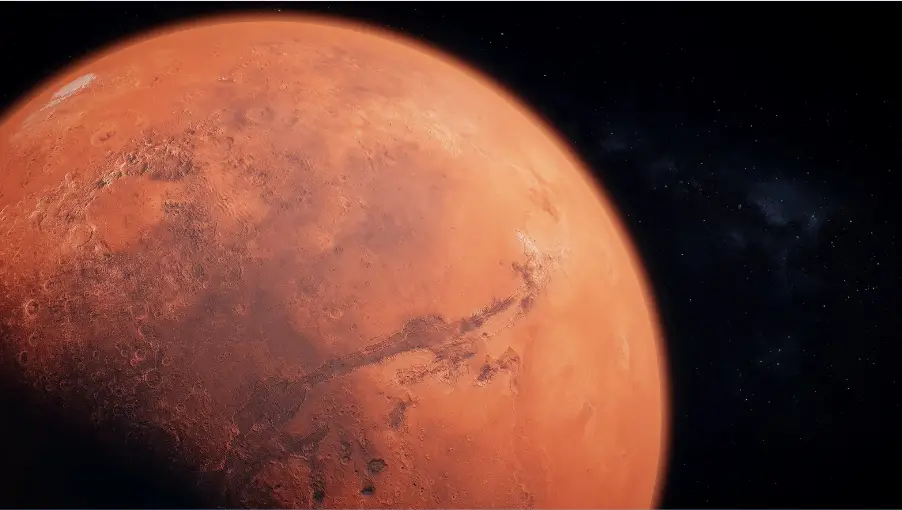Many scientists believe Mars was habitable in the past, and that some kind of life form thrived on the planet millions of years ago. Not only that, but they think it may still be there today—as we speak! Scientists are trying to determine whether Mars has all the right ingredients to support life as we know it, and so far the signs are good. Life on Earth has existed here for billions of years, so there’s no reason why life couldn’t exist on Mars too if conditions are just right! Here are some reasons why Mars could be considered habitable today.
What makes a planet habitable
A planet is considered habitable if it can support life. In order to do this, it needs to have water, a breathable atmosphere, and enough gravity to hold on to an atmosphere. It also needs to not be too hot or too cold. The planet also needs a star that gives off enough light and heat, but doesn’t emit too much radiation. The Sun emits ultraviolet (UV) radiation which damages DNA and makes skin cancer more likely. Mars receives about 1/3 of the UV rays as we receive here on Earth, so there might be less risk for skin cancer. Another advantage is that Mars only rotates once every 24 hours instead of once every 24 minutes like Earth does which means there would be two days in one day instead of just one day in one day. The orbit of Mars is elliptical while the orbit of Earth is nearly circular meaning that Mars has a greater range of climate zones than Earth.
-Another thing that makes Mars more livable than many other planets are its seasons. They are caused by our proximity to the sun- when we are closest, it’s winter; when we’re furthest away, it’s summer.
How Life May Have Arisen on Mars
The ingredients that made life possible on Earth are likely present on Mars. With a thick atmosphere, liquid water and organic compounds, it’s possible that life has already originated on the planet in some form. We may find out soon enough with NASA’s 2020 rover mission to Mars.
If not, the search for extraterrestrial life will continue to expand elsewhere in our solar system or beyond. Our goal is to follow the thread of evidence wherever we can, said Jim Green, director of planetary science at NASA. We’re interested in any place where there is water-bearing rock. That includes Earth, the Moon and asteroids, but also places like Europa. Water is an essential ingredient for life as we know it. And while Europa’s ocean is deep under miles of ice crust, if there are hydrothermal vents at the bottom of those oceans as suspected, then maybe even there life could exist. We have to think about life in different ways, says Green. It doesn’t all have to be based on DNA.
What NASA Thinks About the Prospects for Life on Mars
Mars is a really interesting planet because it’s got a lot of diverse terrain. It has its dry desert regions, and it’s also got these wetter, higher-latitude regions, said Rich Zurek, chief scientist for NASA’s Mars program at Jet Propulsion Laboratory in Pasadena, Calif. We think that if life ever emerged on Mars, which it may have in some form or another many years ago when conditions were different than they are today–it may still exist there. In 2020, NASA plans to send an unmanned rover to explore an area near the Martian equator. The rover will drill into rocks below the surface to search for organic compounds and other chemical markers of past microbial life. The rover will not return any samples to Earth but its instruments can search much more closely for traces of past life than other missions so far. And indeed that what it did find: traces of evidence for ancient life on Mars!
The Planet as a Home Base
Mars has a thin atmosphere and an average temperature of -81 degrees Fahrenheit (-62 degrees Celsius), so it is not conducive to life on the surface. But if humans were able to get below ground, they would find that there are many characteristics that make it surprisingly similar to Earth. For example, there’s plenty of water ice at its poles (though frozen solid). The soil also contains magnesium and other minerals needed for plant growth. In addition, because Mars’ axial tilt is similar to ours, it experiences seasons like we do — but with temperatures as cold as they are on Earth in winter months. It doesn’t hurt that Mars’ orbit around the sun takes 687 days, which means you only need six months worth of supplies to last you one Martian year. Plus, studies have found evidence suggesting its once-intense magnetic field may have been enough to shield Mars from solar radiation and protect life underground.
![]()
